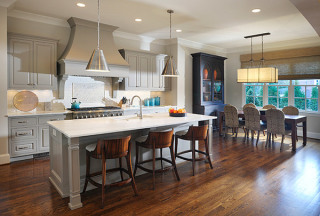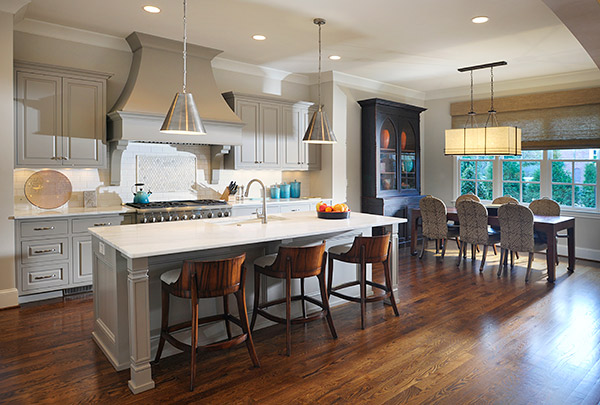Turning Your Dream Home Into Reality
Your dream home may not be as far from reality as you might think. As you look at today’s homes, with their wide choice of luxurious features and finishes, options, and upgrades, you may feel overwhelmed. Let us suggest a method for sorting out what is most important to you.
As you begin to think about a new home, whether it’s your first house or a seasonal residence, take time to create a wish list of what you’d like to have and a separate list of what you must have to meet your family ‘s needs.
The “wish” list allows you to dream while the “needs” list keeps your feet on the ground. The process of creating the lists establishes expectations, minimizes impulsive decisions, and fosters an objective balance between fantasy and reality. This exercise can also help determine the location and setting of your new home. Together, your lists create the foundation for a focused search and the ultimate discovery of the house that bestsuits your lifestyle, going a long way toward assuring your satisfaction now and long into the future.
Consider the following guidelines to get you started:
1. Keep separate lists. Maintain individual “wants” and “needs” lists. Separate lists will help you recognize what you need and help you prioritize everything else.
2. Take your time. Keep both lists open for brainstorming sessions, as well as random thoughts. Put time aside to add to your lists following visits to open houses, model homes, sales centers or local home shows. The goal: explore and weigh alternatives as part of the process of finding your dream home. As builders, we find that it is easier to provide clients with exactly what they want when they come prepared with clear ideas.
3. Start a clip file. Supplement your lists with photos and articles from magazines, newspapers, and online resources to reinforce and illustrate your ideas, providing even greater detail for a design professional or homebuilder.
4. Think outside the kitchen. In addition to the “glamor” rooms, keep in mind storage areas, laundry and service rooms, and family and entertainment spaces. These ‘additional spaces’ are vitally important to the comfort of your family and critical to your ultimate satisfaction.
5. Community considerations. Consider what you want and need regarding the environment around your ideal home, such as climate (temperature or seasonal changes), drive time or distance from services and amenities, and proximity to family and friends. Documenting such preferences will help you narrow the choices of general location or community for your new home. In addition, list the daily tasks and recreational activities you like (and perhaps don’t like), both in your home and within the surrounding area, to help further define the features of your home and its setting.
6. List your dont’s. Keep track of the things that annoy you about your current house (as well as homes you’ve lived in, seen, or visited over the years) and promised yourself to avoid or change. Your new home is a chance for a fresh start, so take advantage of the opportunity.
Upon completing each list to your satisfaction, take an objective look at what’s needed and what you’re willing to trade-off, for whatever reason. Prioritize each list and eliminate items that you know are unrealistic or unnecessary. Then transfer items low on the lists to separate lists of wants and needs that you can hope or plan for in the future.
By the time you are finished, what started as a rough collection of your dreams has evolved into a clear-cut set of expectations and priorities. At the same time, you have created a guide for a design professional or homebuilder that will be of great assistance in the creation a home that meets your lifestyle and reflects all that you hoped for in a new house.

